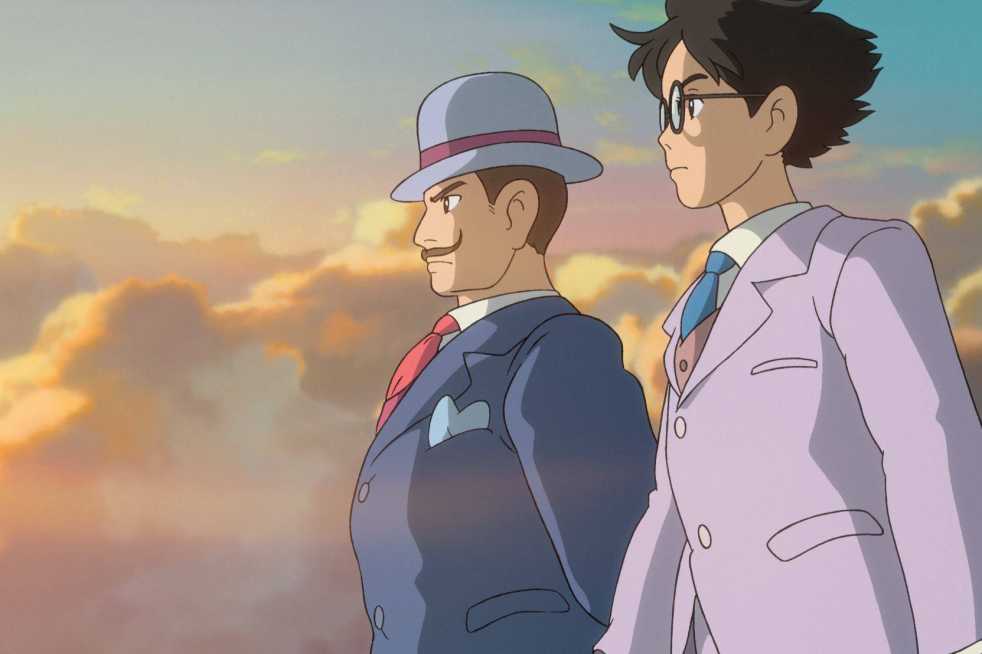In a career that spans nearly four decades, Hayao Miyazaki has created entire worlds of fantasy and wonder. Miyazaki consistently crafts stories that are both elegant and filled with characters of substance and style. While not his usual fare, his alleged swan song, The Wind Rises, is a worthy addition to his canon, particularly as part of the evolution of his art and animation style.
The story is a fairly simple, slice-of-life tale, albeit one of a larger-than-life figure. Loosely revolving around the life of Jiro Horikoshi, the talented engineer of the infamous Japanese Zero aircraft, it depicts his rise from humble roots to the elite ranks of the Mitsubishi Corporation. He is the Randian hero without all the sociopathic emotional baggage.
This narrative unfolds in short vignettes of his life from childhood to the completion of his most famous aircraft, the Zero. Along the way, the audience watches Jiro graduate top of his class, learn from the best in his field and fall in love.
The artwork is beautiful in its simplicity, a reminder that traditional animation is just as capable as the big-budget CGI bonanzas of today. Jiro spends a great deal of the movie dreaming, and his fantasies serve as a vivid showcase of wind and flight animation. Never has something as literally transparent as the wind been rendered so elegantly on screen.
The characters are also a deviation from Miyazaki’s usual style. In this case, however, it is to the detriment of the film. Since the story is structured as a series of vignettes in Jiro’s life, he never really develops as a person. The Jiro at the end of the film is not particularly different from Jiro the boy.
Naoko, the young woman Jiro falls in love with, is also different from Miyazaki’s typical heroines. Nearly all of his past works have featured a strong, female lead. In the film, Naoko is presented as someone to support Jiro with no real hopes and aspirations of her own. While their meeting and courtship is cute in a cliché way, the general substance of the relationship lacks depth.
The dialogue can be stilted at times, possibly due to cultural boundaries. Most of the characters are serious and driven solely by their goals. The exception is Jiro’s snarky, cantankerous boss, voiced by Martin Short. In an otherwise serious film, he provides one of the few consistent sources of humor.
Miyazaki generally portrays his protagonists with a sense of innocence and idealism. However, unlike all of his other works, this one is grounded in historical events, which make this idealistic depiction troubling.
The story never discusses Jiro’s moral culpability in designing planes built by Korean slave labor and used to kill countless civilians and soldiers during Japan’s expansion during World War II. At best, it is hand-waved by Jiro’s role-model telling him that it is better to live in a world with “pyramids” than without them, a proposition the victims would probably find disagreeable. What makes this particularly disappointing is that Miyazaki’s other movies are famous for their use of morally grey characters.
This is emphatically not Miyazaki’s typical work. Unlike his previous movies, there are no magic worlds or mystical creatures. This is a reflection upon a long, productive career in which Miyazaki uses the character of Jiro Horikoshi as a proxy for thinking about his own legacy.
Viewers familiar with Miyazaki’s work will find a lot to enjoy here. The film is a culmination of the director’s life and work. Miyazaki has claimed he wishes to retire after this movie, but this is literally his tenth retirement in the past twenty years. If he does keep his promise this time, then The Wind Rises is a bittersweet ending to his career. It is a great and entertaining movie overall but not one that best represents the director’s vision and capabilities.
Our Take: 3/5
